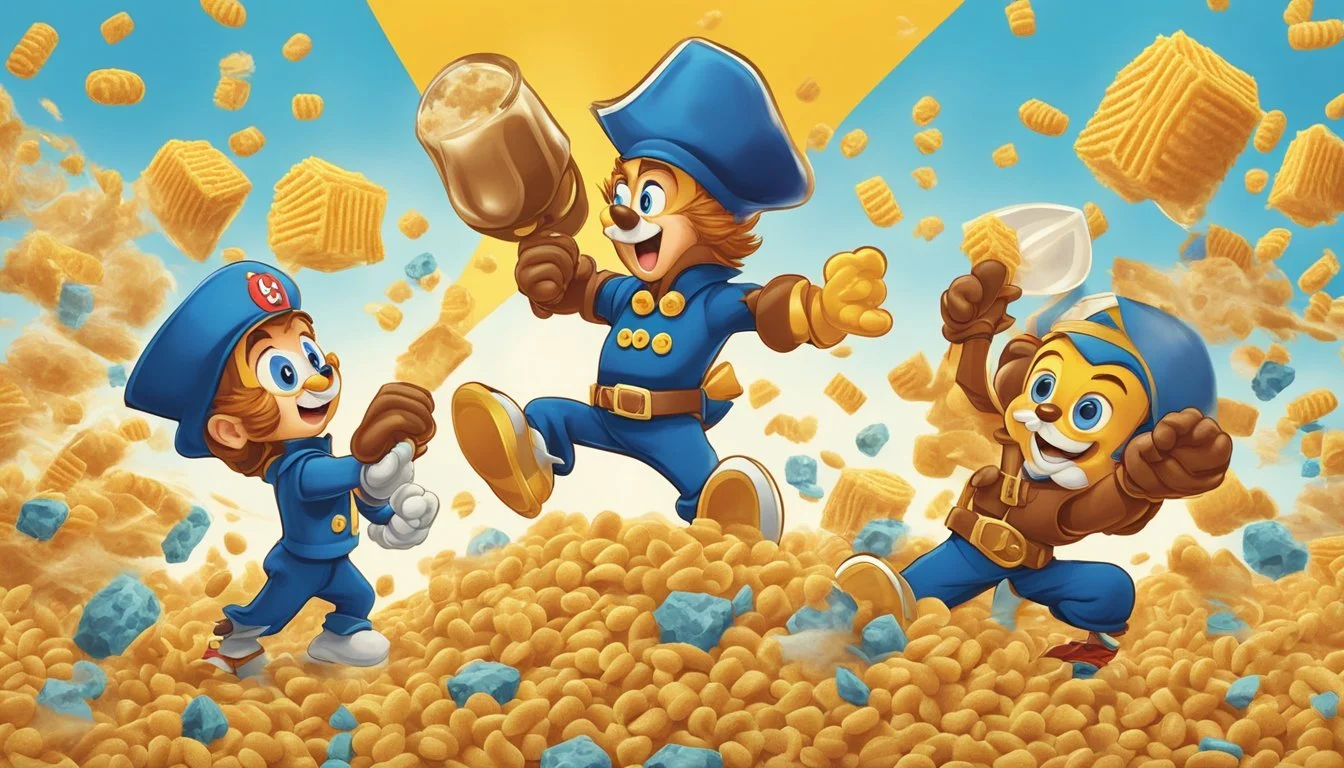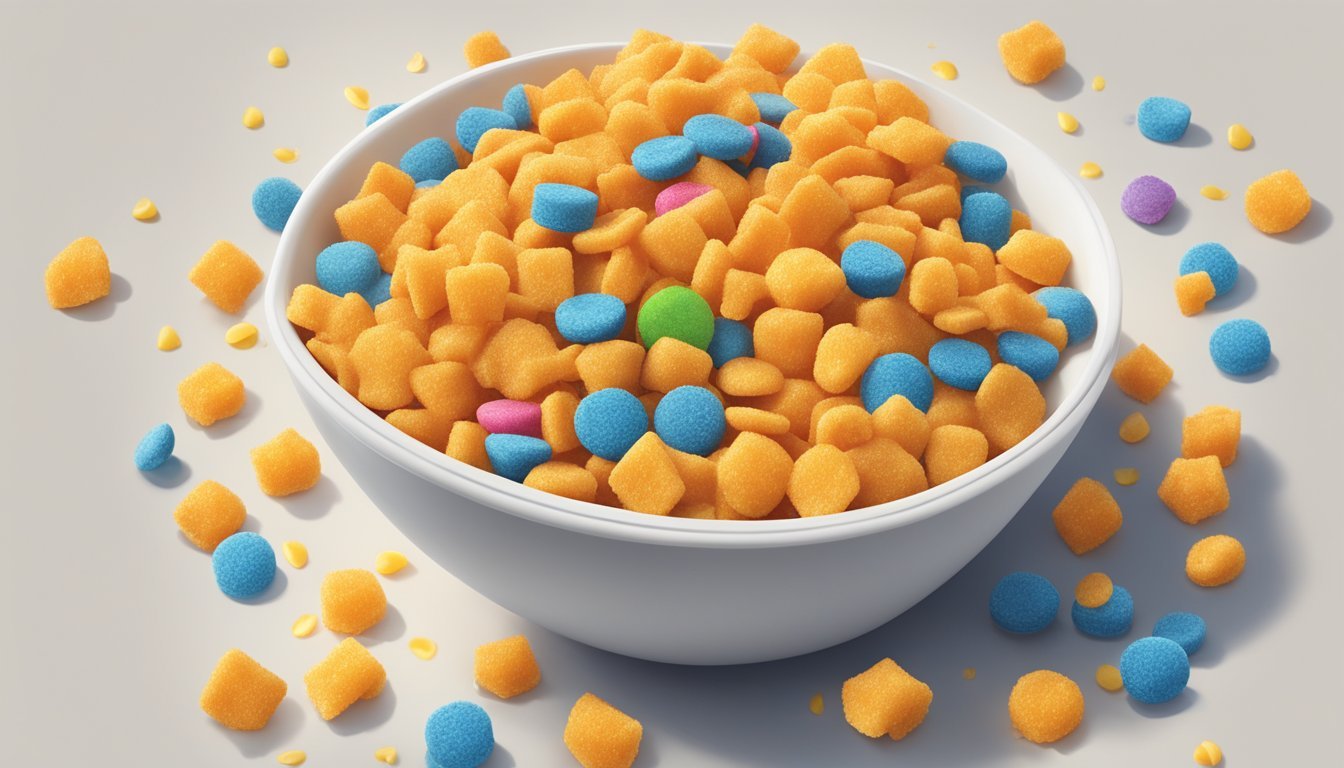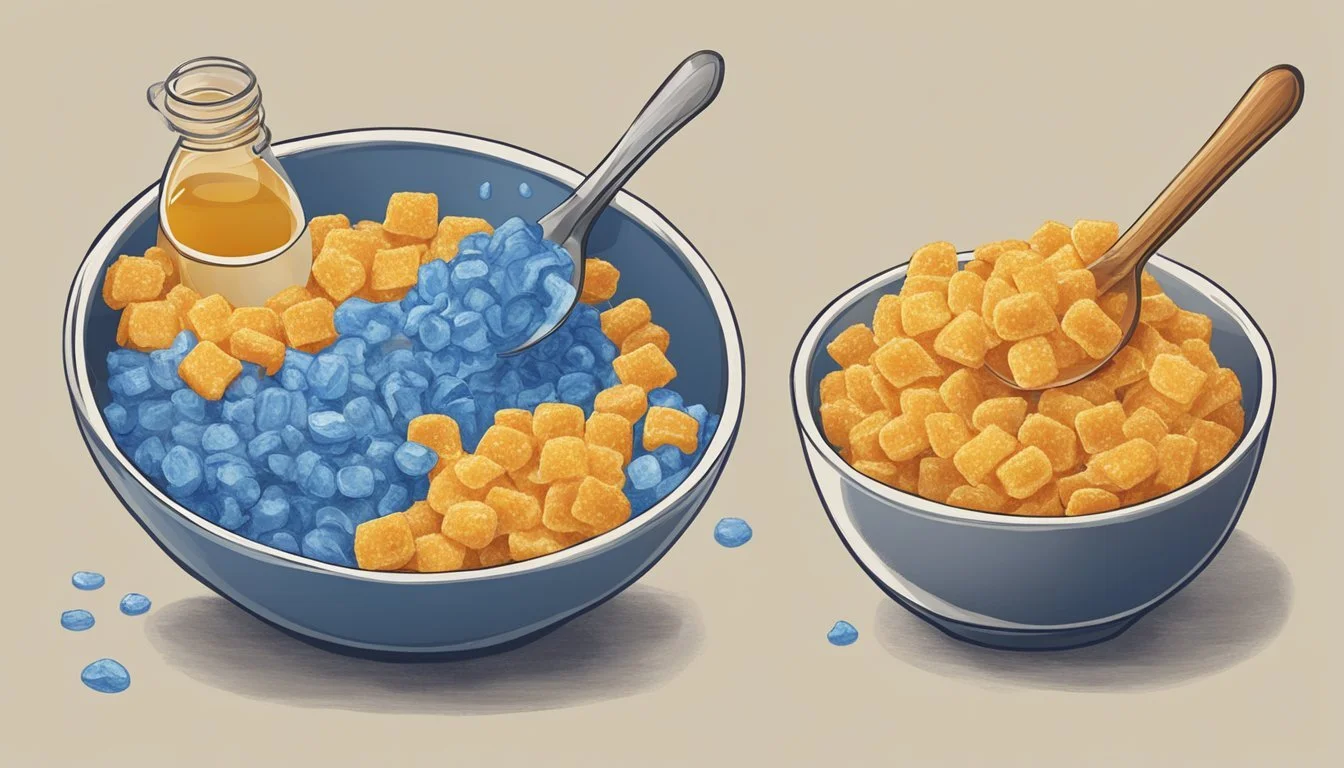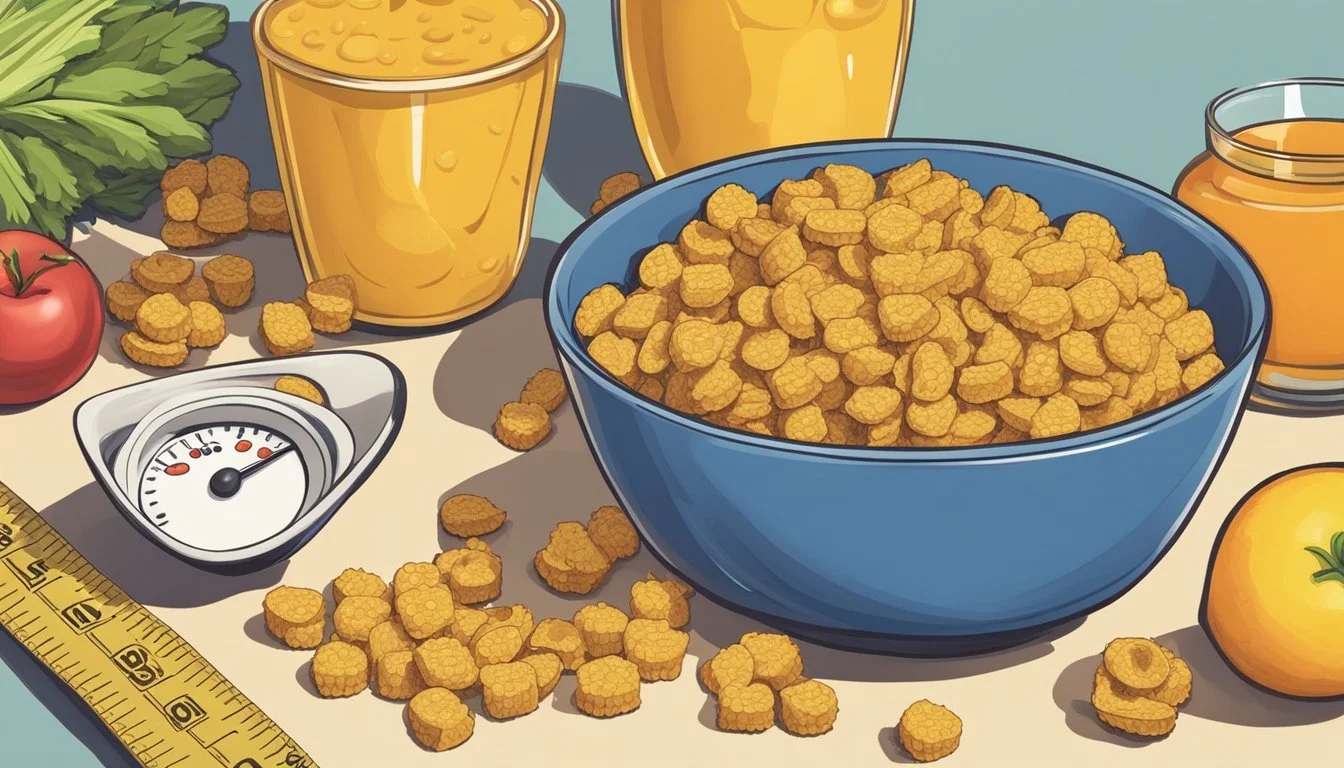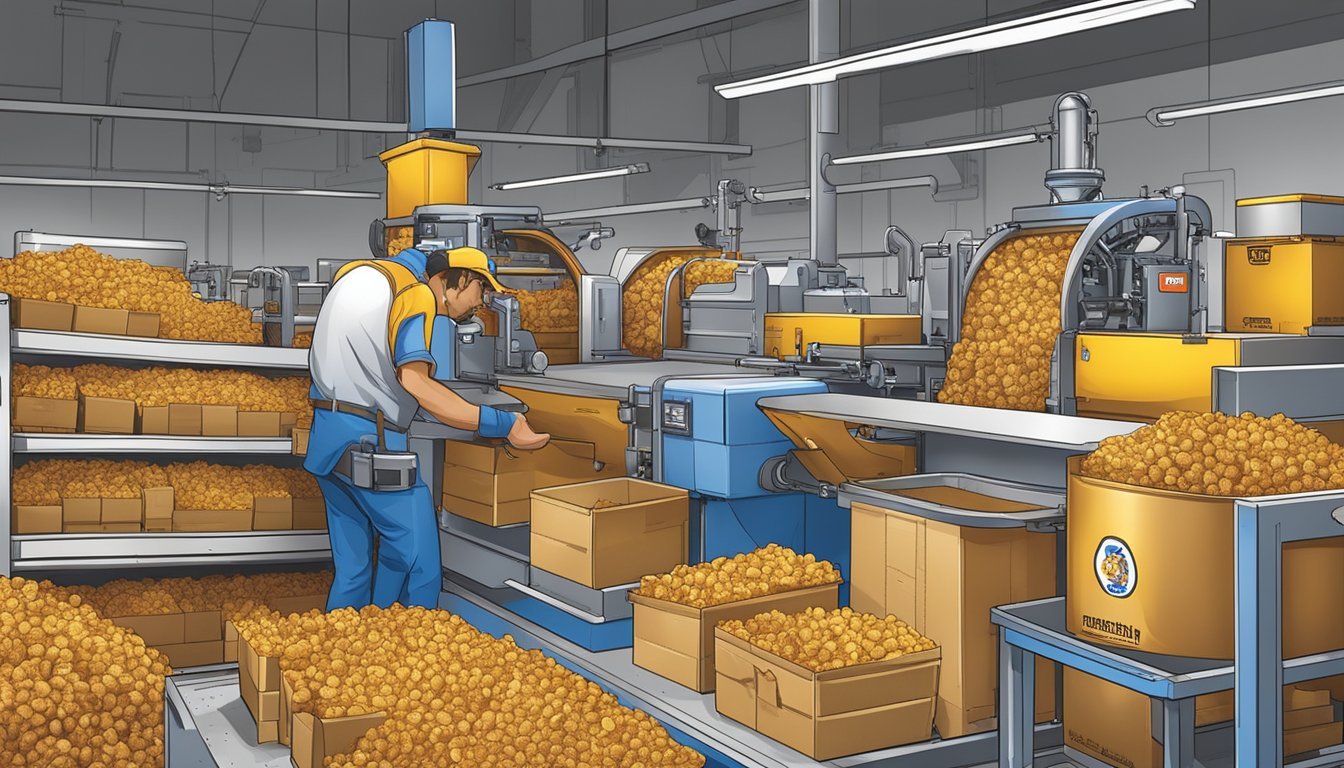Cap'n Crunch vs Honey Ohs!
Ultimate Breakfast Cereal Showdown
This Article is Part of Our Breakfast Cereal Guide with Details on Cap'n Crunch Nutrition and Honey Ohs! Nutrition
When comparing Cap'n Crunch and Honey Ohs, several factors must be considered to determine which is the healthier option. Cap'n Crunch, made by the Quaker Oats Company, is well-known for its sweet and crunchy appeal. Its high sugar content often makes it a less favorable choice for those mindful of their dietary intake.
Honey Ohs, also from Quaker Oats, offers a slightly different profile. This cereal tends to have a lower sugar content compared to Cap'n Crunch. Honey Ohs also provide a bit more dietary fiber, which can be beneficial for digestion. These aspects make Honey Ohs appealing to those who want a sweet cereal with more nutritional benefits.
For those who grew up enjoying these cereals, the nostalgia factor is strong. However, considering the nutritional information is essential when making daily food choices. While Cap'n Crunch might be the preferred choice for its taste, Honey Ohs stands out as a slightly healthier option based on sugar and fiber content.
Historical Background
Cap'n Crunch and Honey Ohs! are two popular breakfast cereals with rich histories. Each has undergone significant evolution in their recipes, branding, and ownership since their introductions.
Origins of Cap'n Crunch
Cap'n Crunch was introduced in 1963 by the Quaker Oats Company. The cereal's flavor was developed by Pamela Low, who aimed to recreate her grandmother's recipe of brown sugar and butter over rice. This unique combination resulted in the cereal's signature sweet, crunchy texture.
The mascot, Horatio Magellan Crunch, or Cap'n Crunch, was created to appeal to children. The character has evolved over the years, becoming more robust and active. Since 2001, Quaker Oats has been a subsidiary of PepsiCo, enabling Cap'n Crunch to reach a broader audience.
Development of Honey Ohs!
Honey Ohs!, originally known as Oh! s, was launched by the Quaker Oats Company in 1980. Initially, the cereal came in two varieties: "Crunchy Graham" and "Honey Nut." These were later renamed "Honey Graham" and "Honey Nut," respectively, in 1988.
Later, the cereal was rebranded as Honey Ohs! and manufactured by Post Cereals. The change aimed to refresh the cereal's image and capture a wider market. Honey Ohs! combined graham and honey flavors, appealing to those looking for both taste and crunch in their breakfast cereal.
Nutritional Comparison
Both Cap'n Crunch and Honey Ohs offer unique nutritional properties. The comparison delves into essential macronutrients, vitamins, minerals, calorie content, sugars, and dietary fiber.
Macronutrient Profile
Cap'n Crunch and Honey Ohs each provide 1 gram of protein per serving. Another similarity is that both cereals contain a comparable amount of fat, making them low-fat options. The total carbohydrates in Cap'n Crunch consist of simple sugars and some starch, while Honey Ohs tends to have a mix of both simple and complex carbohydrates. The fat content in these cereals is minimal, making them suitable for low-fat diets. Cap'n Crunch: 120 calories, 1g protein, Honey Ohs: 120 calories, 1g protein.
Vitamins and Minerals Content
Cap'n Crunch and Honey Ohs are fortified with a variety of vitamins and minerals. Cap'n Crunch has substantial iron content, significantly higher than Honey Ohs. It also offers folate, calcium, and Vitamin D. In contrast, Honey Ohs includes a broader spectrum of vitamins such as Vitamins A, C, and B-complex vitamins. The mineral content in Honey Ohs, including magnesium and zinc, aligns closely with daily nutritional requirements. For example, Cap'n Crunch provides around 296% of the daily need for folate.
Caloric and Sugar Content
Each serving of Cap'n Crunch and Honey Ohs contains 120 calories. Both cereals are high in sugar, though Cap'n Crunch tends to have slightly less. Managing sugar intake is vital, given that both cereals contain a substantial amount of added sugars. The FDA recommends limited sugar consumption to reduce risks of chronic diseases. Cap'n Crunch's sugar content aligns closely with FDA recommendations, though moderation is advised.
Dietary Fiber and Complex Carbohydrates
The dietary fiber content in Cap'n Crunch is minimal, with each serving offering less than 1 gram. Honey Ohs also has low dietary fiber content, but it maintains a balance with a slightly higher concentration of complex carbohydrates. Complex carbohydrates contribute to sustained energy and better blood sugar control. For individuals looking to increase fiber intake, both cereals may fall short, necessitating supplementation from other dietary sources.
These comparisons highlight the nutritional profiles of Cap’n Crunch and Honey Ohs, addressing their protein, vitamins, minerals, caloric content, sugar levels, fiber, and carbohydrate complexity.
Serving Size and Usage
Understanding the serving sizes and daily intake recommendations for Cap'n Crunch and Honey Ohs can help consumers make informed dietary choices.
Standard Serving Comparisons
Cap'n Crunch and Honey Ohs both offer standard serving sizes that make it easy for consumers to compare nutritional information. Cap'n Crunch has a serving size of 0.75 cups, with a serving weight of 1 ounce. Each serving provides 120 calories, 1 gram of protein, 2 grams of fat, and 210 milligrams of sodium.
Honey Ohs also has a serving size of 0.75 cups but shines in slightly different nutritional areas. Each serving of Honey Ohs weighs 1 ounce and contains 120 calories, 2 grams of protein, 1 gram of fat, and 140 milligrams of sodium.
A comparison in tabular form can be helpful:
Nutrient Cap'n Crunch Honey Ohs Serving Size (cups) 0.75 0.75 Serving Weight (oz) 1 1 Calories 120 120 Protein (g) 1 2 Fat (g) 2 1 Sodium (mg) 210 140
Recommended Daily Intake
The FDA recommends a balanced daily intake to ensure consumers receive necessary nutrients without exceeding their calorie needs. For an average adult, it's suggested to limit saturated fat to less than 20 grams per day and sodium to less than 2,300 milligrams per day.
Both cereals fit well into these recommendations but serve different health benefits. Cap'n Crunch's higher sodium content compared to Honey Ohs may be a consideration for those monitoring salt intake. Meanwhile, Honey Ohs’s higher protein content might be beneficial for muscle maintenance but also should be balanced with other dietary sources.
It's important to include a variety of food groups in one's diet to meet daily vitamin and mineral needs. Choose cereals that complement other healthy choices throughout the day to maintain overall nutritional balance.
Health and Diet Considerations
The health impact of Cap'n Crunch and Honey Ohs varies across several nutritional aspects. Key factors include dietary fiber benefits, sugar and fat content analysis, and how these cereals fit into special diets.
Dietary Fiber Benefits
Dietary fiber plays a significant role in digestive health. Cap'n Crunch and Honey Ohs both offer minimal fiber content, which might not contribute much to daily fiber intake. A diet rich in fiber can help regulate the digestive system, reduce cholesterol levels, and maintain blood sugar levels.
Dietary guidelines recommend consuming 25-30 grams of fiber daily. Cereals with higher fiber content can aid in achieving these recommendations. While Cap'n Crunch and Honey Ohs are low-fiber cereals, combining them with other high-fiber foods like fruits or vegetables can enhance the overall nutrient profile of a breakfast meal.
Sugar and Fat Content Analysis
Analyzing the sugar and fat content is crucial for understanding their impact on health. Cap'n Crunch contains high amounts of sugar per serving, contributing to quick spikes in blood sugar levels, which may be unfavorable for individuals on low glycemic index diets. Honey Ohs also contain significant sugar levels, though the exact quantity might vary by flavor variants.
Regarding fats, Cap'n Crunch and Honey Ohs both include minimal fat per serving, mostly from monounsaturated and polyunsaturated fats, which are healthier compared to saturated and trans fats. For those following low-fat diets, these cereals may appear acceptable, but high sugar content might outweigh the benefits of their lower fat composition.
Impact on Special Diets
Special diets like low-carb, low-calorie, and low-glycemic index need careful consideration when choosing cereals. Cap'n Crunch and Honey Ohs are not ideal for low-carb diets due to their high carbohydrate content. For those on low-calorie diets, the caloric intake per serving from these cereals should be monitored in conjunction with the rest of the day's meals.
For individuals managing diabetes or insulin sensitivity, both cereals' high sugar content makes them less suitable for low glycemic index diets. Those aiming for balanced and low-GI breakfasts might need to look beyond these options or pair them with high-protein, low-sugar foods to moderate their glycemic impact.
Manufacturing and Branding
The competition between Cap'n Crunch and Honey Ohs! involves distinct manufacturing practices and unique branding strategies tailored by their respective manufacturers, Quaker Oats Company and Post Cereals.
Production Process Insight
Cap'n Crunch has been manufactured by Quaker Oats Company since 1963. The production process predominantly uses corn and oat mixed into a unique blend, ensuring its distinctive crunch. The cereal's production involves extrusion, where the mix is shaped and then toasted to achieve its characteristic texture.
Honey Ohs!, by Post Cereals, was initially introduced by Quaker Oats in 1980 but transitioned to Post later. This cereal incorporates a blend of oats, corn, and honey. The mix undergoes a specific baking process that enhances the honey flavor and provides a crunchy texture. The two-step baking process ensures a consistent quality that attracts its loyal consumer base.
Marketing Strategies
Cap'n Crunch is known for its bold and engaging marketing. Quaker Oats developed the iconic mascot, Cap'n Horatio Magellan Crunch, which has been central to its branding. The character has been utilized in various commercials, limited-edition releases, and interactive online content. The branding focuses on fun, adventure, and nostalgia, appealing to both children and adults.
Honey Ohs! adopts a family-friendly and wholesome image. Post Cereals emphasizes the natural honey flavor and nutritious content. Marketing campaigns often highlight the cereal's taste and crunchiness. The product packaging features vibrant colors and attractive visuals to draw attention on supermarket shelves. The emphasis is on quality ingredients and a satisfying breakfast experience.
Consumer Experience
Cap'n Crunch and Honey Ohs each offer unique flavor experiences and tactile sensations, and their packaging adds an additional layer to their overall consumer appeal.
Flavor Profiles
Cap'n Crunch is known for its distinctive sweet corn flavor enhanced by a hint of brown sugar. This gives it a crunchy, sugary taste that many find irresistible. On the other hand, Honey Ohs focuses on a honey nut flavoring complemented by a subtle graham cereal base, providing a more nuanced sweetness.
Note: The flavoring of both cereals has been consistent over the years but always check the most up-to-date product information for any changes.
Texture and Consistency
Cap'n Crunch is famous for its crunchy texture that maintains its firmness even when submerged in milk for several minutes. This makes it a favorite for those who enjoy a crisp bite.
Honey Ohs offers a combination of crunch and chewiness due to its unique honey and oat clusters. The dual texture caters to those who appreciate a bit of variety in every bite, making it less likely to become soggy quickly.
Packaging and Presentation
Cap'n Crunch has a bold and colorful packaging that prominently features the friendly Cap'n mascot. The vibrant, eye-catching design appeals to both kids and adults.
Honey Ohs opts for a more traditional design with warm shades of yellow and honey visuals to emphasize its flavor profile. The design is straightforward, focusing on the cereal's natural ingredients.
Both brands ensure their packaging is informative, listing nutritional details clearly for consumers to easily compare serving sizes, ingredients, and other important data.
Market Analysis
Cap'n Crunch and Honey Ohs! cater to different segments of the breakfast cereal market with distinct attributes that appeal to various consumer preferences. This analysis covers their product specifics and pricing.
Comparative Product Analysis
Cap'n Crunch, a product by Quaker Foods, is known for its crunchy texture and variety of flavors, including the classic and Crunch Berries. Each serving contains 1 gram of protein and 2 grams of fat. It also has 220 milligrams of sodium. The brand's appeal includes its vibrant packaging and well-established market presence.
Honey Ohs! offers a unique honey flavor and a crunchy texture. Per serving, it also contains 1 gram of protein and 2 grams of fat, similar to Cap'n Crunch. Honey Ohs! market position relies on its distinct taste profile and brand loyalty. Both cereals compete with other notable brands like Kellogg's Honey Smacks and Cinnamon Toast Crunch.
Price Point Comparison
Price points for these cereals typically vary by retail outlet and location. On average, Cap'n Crunch tends to be priced slightly higher due to brand prestige and varied flavor options. Consumers might expect to pay around $3.50 to $4.50 per box for Cap'n Crunch depending on the size and flavor.
Honey Ohs! tends to be more budget-friendly, generally ranging from $2.50 to $3.50. This price positioning makes it competitive, particularly among cost-conscious consumers. Rice Krispies and other cereals like Cinnamon Toast Crunch also play a significant role in market pricing dynamics, often influencing promotional strategies and in-store pricing.


